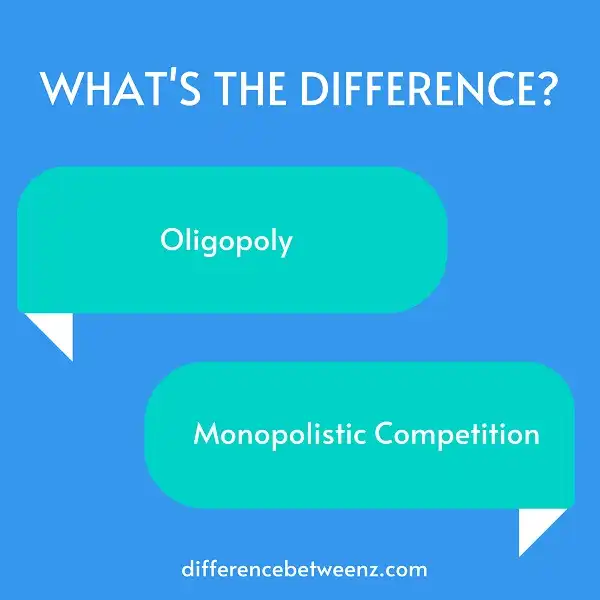Both monopoly and oligopoly are market structures that involve a limited number of sellers. However, the difference between these two types of markets is that monopolistic competition involves many sellers while oligopoly involves a few dominant firms. This results in different dynamics for each type of market. In monopolistic competition, firms have to compete on the basis of price and quality to attract consumers. However, in oligopoly, firms can earn abnormal profits through collusion or by being the first to enter the market. Therefore, it is important to understand the differences between monopoly and oligopoly in order to understand how these markets work.
What is Oligopoly?
Oligopoly is a market structure in which there are a small number of firms that dominate the market. Oligopolies can arise when there are barriers to entry, such as high capital requirements or government regulation. Oligopolies often have close relationships with one another, and they may engage in price fixing or other collusion in order to keep prices high and profits high.
Oligopolies can be difficult for consumers because they may have little choice in the products available, and they may have to pay high prices. However, oligopolies can also be efficient, because the few firms that dominate the market may be able to produce at low costs and pass those savings on to consumers.
What is Monopolistic Competition?
- Monopolistic competition is a market structure where firms sell differentiated products but face fierce competition from other firms in the same industry. Monopolistic competition is characterized by many small firms, each producing a slightly different product.
- One of the key features of monopolistic competition is that there are few barriers to entry, meaning that new firms can easily enter the market. Monopolistic competition typically results in high levels of advertising and promotional spending as firms attempt to differentiate their products from those of their rivals.
- Monopolistic competition can be found in many industries, such as the fast food industry, the retail industry, and the airline industry. Monopolistic competition often leads to innovation as firms strive to develop new and improved products. Monopolistic competition generally results in lower prices and more choices for consumers.
Difference between Oligopoly and Monopolistic Competition
Oligopoly and monopolistic competition are two very different types of market structures. In an oligopoly, there are only a few firms that produce the majority of the output in the market.
- In contrast, in monopolistic competition there are many firms producing similar but slightly differentiated products. Oligopolies often arise when there are high barriers to entry, such as when a firm has a patent or when there are high sunk costs.
- Monopolistic competition often arises due to product differentiation, which can be due to branding, geographical location, or other factors. Due to the different market structures, the two types of markets also have different key characteristics.
- Oligopolies tend to have high prices and low output, while monopolistic competition tends to have moderate prices and output. Oligopolies also tend to be more stable than monopolistic competition, since there are fewer firms competing and each firm has more power. Finally, collusion is more common in oligopolies than in monopolistic competition.
Conclusion
Oligopoly and monopolistic competition are two different types of market structures. An oligopoly is a market where there are only a few sellers, while monopolistic competition is a market with many sellers. The main difference between these two markets structures is the level of competition. In an oligopoly, there is less competition because there are only a few sellers, while in monopolistic competition, there is more competition because there are many sellers. This increased level of competition usually leads to lower prices and higher quality products.


